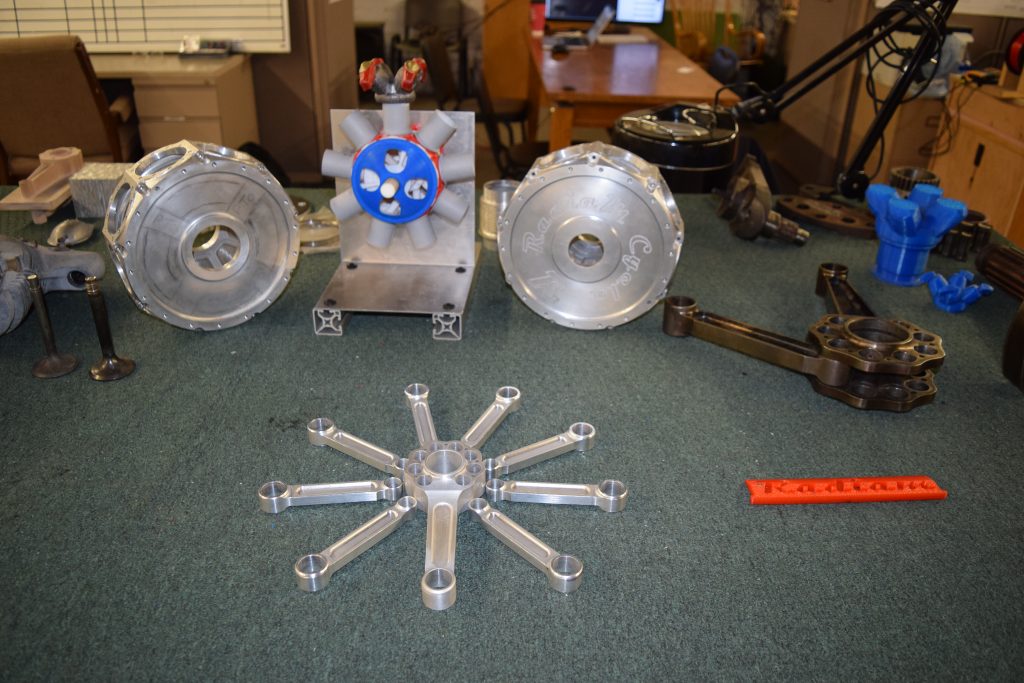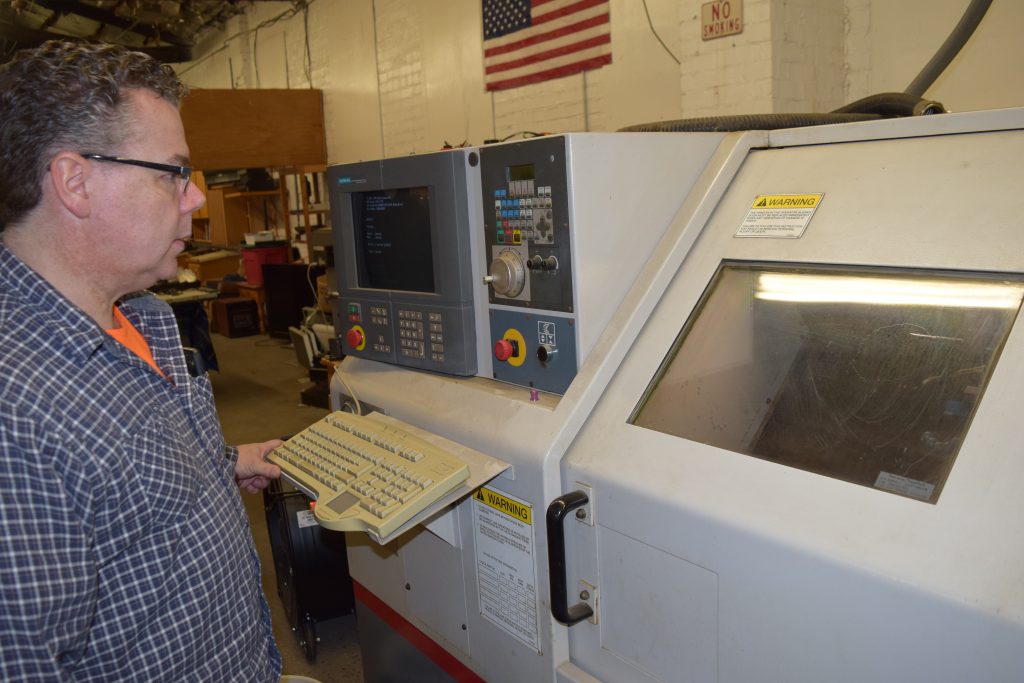What’s the future of engine technology?
While most of the focus has been on electric engines, a Canton, OH company is convinced the future of engine design actually lies in the past. Radial Engine Innovations (REI), Inc. has begun developing a modern-day version of the radial engine called the RA-92 that traces its roots to pre-World War II aircraft.
According to company officials, this modified nine-cylinder radial engine is capable of achieving up to a 20-percent decrease in fuel consumption and cleaner CO2 emissions in non-aerospace applications, including commercial trucks, motorcycles, and eventually automobiles.
“We’re going the opposite direction of most people,” said Mitch Boulton, president of Radial Engine Innovations. “Everyone’s thinking electric, but the internal combustion engine is here to stay. There are too many people out there that love the internal combustion engine. We have to make that work, so you try to come up with the best solution. And we think (the radial engine) is it.”
REI recently teamed up with Fredon Corp. in Mentor, OH to produce nine prototype engines for use on multi-functional generators, motorcycle applications, and the “Super Truck” program—a federal initiative to reduce emissions in long-haul tractor trailers. The company is also in the process of finalizing a substantial grant through the U.S. Department of Energy.
Radial, Not Rotary
Boulton says the radial engine is often confused with the rotary engine, but the designs are drastically different.
It works like any other four-stroke engine in that there are intake, compression, power, and exhaust strokes. The radial engine uses a rotating crankshaft inside a fixed engine block; however, the configuration is unique. The radial engine is circular and includes an odd number of cylinders with a shorter crankshaft than today’s conventional inline or V-shaped engines. A master rod and piston is connected directly the crankshaft, and a set of articulating rods are connected to this master rod and hold the pistons for the remaining cylinders (see animation below).
The engine’s design already offers some inherent advantages. The shorter crankshaft makes it more efficient and there are less moving parts to wear out. Its unique every-other-cylinder firing order makes the engine very torquey and aids with the balancing of the engine. It’s a proven design that dates back to the 1800s, but it hasn’t truly been updated in more than 70 years.
Boulton, who has been fascinated with the radial engine since his first bi-plane ride as a child, was up for the challenge.
He purchased his first radial engine from the New Engine Air Museum in Windsor Locks, CT about 15 years ago. He began the process of reverse-engineering it and started adding modern technology to improve engine performance.
For example, the RA-92 radial engine is made from a solid chunk of 6061 aircraft aluminum, making it stronger and lighter than its early ancestor. The twin-turbocharged, twin-supercharged 16.4L RA-92 has an incredible power-to-weight ratio, delivering 2,000 horsepower at just 448 pounds.
The engine features an air compressor, patented electromagnet, and generator in one single unit. Because it uses its own mechanical rotation motion to create magnetic energy (magneto system), the electromagnet eliminates the need for a battery. The engine also acts as a big air compressor and starts on compressed air. Boulton and his team even gave the RA-92 a patented, internal CVT transmission and included 44 power take-offs that allow it to power auxiliary components at a job site.
The Radial Done Better
Chances are you’ve seen radial engines on motorcycles or even tractor pull rigs in internet videos.
“Those are basically aircraft engines and they’ll leak all over the place because they’re designed to operate at altitude,” Boulton said. “We are the only ones in the world who have basically taken the radial engine and re-engineered it and redesigned it from the ground up. There are some others who are working on the traditional radial engine, but we are the only ones who have re-engineered and refined it.”
A master-and-articulating rod assembly displayed in front of a RA-92 radial engine blocks at Radial Engine Innovations’ research and development center in North Canton, OH. Company officials say its radial engine design can reduce fuel consumption by 20 percent and greatly decrease emissions.
Boulton says these refinements have allowed REI to create a better solution to the nation’s fuel economy and emissions challenges. According the REI, conventional internal combustion engines convert only about 30 percent of fuel into usable energy, with the remaining energy lost to friction, heat, and incomplete combustion. The RA-92’s radial design allows it be up to 20 percent more fuel efficient, so it creates power with less fuel. The more efficient combustion reduces emissions, and the engine is adaptable to alternative fuels.
According to the REI mission statement, “the RA-92, 9-cylinder radial engine will prove to meet the increased demand for mechanical efficiency and C02 emission reductions, offering break-through, innovative, clean energy solutions.”
Despite its aerospace heritage, Boulton’s vision for the RA-92 radial engine is in non-aircraft applications. Initially, the engine will be made for generators, commercial trucks, and motorcycles, but the possibilities are limitless. The engine is scalable, so the basic design can be sized up or down to fit different engine compartments. It can also be mounted at a variety of angles, making it a viable option for street rods, rat rods, and other custom applications.
“It’s nice because this engine can be placed any way you want,” Boulton said. “In plane. Out of plane. You can lay it flat, angled—any way you want to position it. And it’s modular so you can stack them.”
Sean Brookes, vice president and engineering manager at Radial Innovations machines components for the company’s RA-92 radial engine.
With prototype work in progress at Fredon, the RA-92 concept is really starting to take off, especially when you consider it started out as Boulton’s retirement project.
“I wanted to do something with it in retirement, and the project turned into a full-fledged business,” he said. “Our goal is to build a new plant within a couple years with a couple hundred employees. It’ll be headquartered in the Canton area, and that’ll be our worldwide headquarters for research and development.”




Is it possible to get the Dataset to make a transparent 3D Print for a scaled model?
Hi Andreas! This is something you would have to ask Radial Engineering about. We appreciate your interest!
I read this article and as an engineer, I can tell you it is largely nonsense. The compression ratio is too low relative to what we get in modern direct fuel injection engines and makes efficiency comparisons based off older auto designs. Large radial engines such as the one pictured are fuel efficient because of a very large cylinder size relatively speaking. The ‘squelch’ goes down relative to the displacement literally because there is less cylinder wall, head, and piston crown per cubic inch for heat to flow into reducing thermal efficiency. Larger cylinders relatively speaking are more thermally efficient than small ones. There is a very slight reduction in friction but not enough to amount to a noticeable increase in fuel efficiency. If you want efficiency, look at a Wartsila Sulzer Natural Gas genset. They have over 50% net efficiency at the generator output making them the world’s most fuel efficient engines. If a radial design had any advantages, Wartsila would have used it.
Charles,
I tend to agree. What is with the 4 valve desmo pushrod heads? I don’t see a lot of future for this in trucking as it is not compression ignition.
As for Wartsila Sulzer Natural Gas gensets, they are all based on ship engines which obviously favor a design with the crank on the bottom of the engine. Radials have been used for gen set engines, some of them quite large. I don’t think the form factor is sufficiently better to cause the large companies to develop the radial when inline engines are so efficient. Also, how would you add the crosshead to a radial without making the dimensions truly gigantic.
I saw one yesterday at the Science Museam!
Wish I could share a picture of it! 600 hp!
REI is a scam
charles, the compression ration is low because radial engines have blowers (super chargers) which then increase the cylinder pressure to run efficient. yes the design was used to increase performance at high altitude, and it will take a learning curve not to overboost the engine, but hey, these guys are making it work
How exactly is REI a scam?Did they ask for anything from you because they haven’t from me.
Is possible to make a modern car use radial engine?
after reading your article, I am still in a quandary about whether or not
this engine can be used in ….the Murphy Moose …which has a radial engine from Russia and can, with modifications, be brought up to 400hp.
If you could bring in an engine to develop 410 Hp…… could it be put in this aeroplane and replace the russian engine? surface ceiling….18,000 ft.
Discovered this article today. Searched for REI to see if there were any updates on this engine. @Charles L Myers & @Fred called it!
https://www.cantonrep.com/story/news/2021/02/12/stark-county-man-faces-fraud-charges-28-count-felony-indictment/6745785002/
https://www.cantonrep.com/story/news/2022/02/14/stark-businessman-charles-boulton-rejects-plea-offer-going-trial/6784161001/